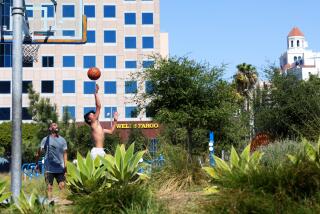What ‘The Post’ gets right about 1970s newsrooms
When you’re creating a movie about telling the truth, every element needs to feel exactly right. In “The Post,” Steven Spielberg’s recounting of the Pentagon Papers leak, the level of period detail, particularly in the sets and costumes, tells yet another story — how journalism got done in 1971.
The now-obsolete technology and often physical exertion that powered journalism nearly 50 years ago figures prominently in the film. Printing was a laborious, mechanical affair with Linotype machines that set individual letters into lines of hot, molded lead. Writing was more tactile with manual typewriters, paper, pens and, for editing, red pencils.
Costume designer Ann Roth paid careful attention to the class and gender norms of the era, dressing the women journalists in the required girdles, hose and clip-on earrings (which had to be removed to hear on the telephone). Here’s a sampling of what else “The Post” gets right about newsrooms back in the day.
— Reporters dressed to be able to run, whether to deliver a story draft to your editor across the room or beat the competition to a source. But never in athletic shoes.
— Neckties were nearly mandatory in the workplace, even with short-sleeve dress shirts. Tom Hanks, for his role as editor Ben Bradlee, “wore five Walter Cronkite ties that were given to me after he died,” Roth said.
-- Coins (and pockets to hold them) were crucial. Parking meters and pay phones ate nickels, dimes and quarters by the handful.
-- Necessary accessory: a watch. Only a fool wouldn’t know exactly how many minutes until deadline.
— Class and gender lines were sharper, especially as women were gaining status in male-dominated newsrooms. Katharine Graham, the wealthy socialite owner of the Washington Post, wore feminine dresses and skirts more often than menswear-inspired suits or trousers.
--Yes, the building did shake when the presses got running. These days, the presses are usually housed separately from the rest of the newspaper offices.
WATCH: Video Q&A’s from this season’s hottest contenders »
More to Read
From the Oscars to the Emmys.
Get the Envelope newsletter for exclusive awards season coverage, behind-the-scenes stories from the Envelope podcast and columnist Glenn Whipp’s must-read analysis.
You may occasionally receive promotional content from the Los Angeles Times.










